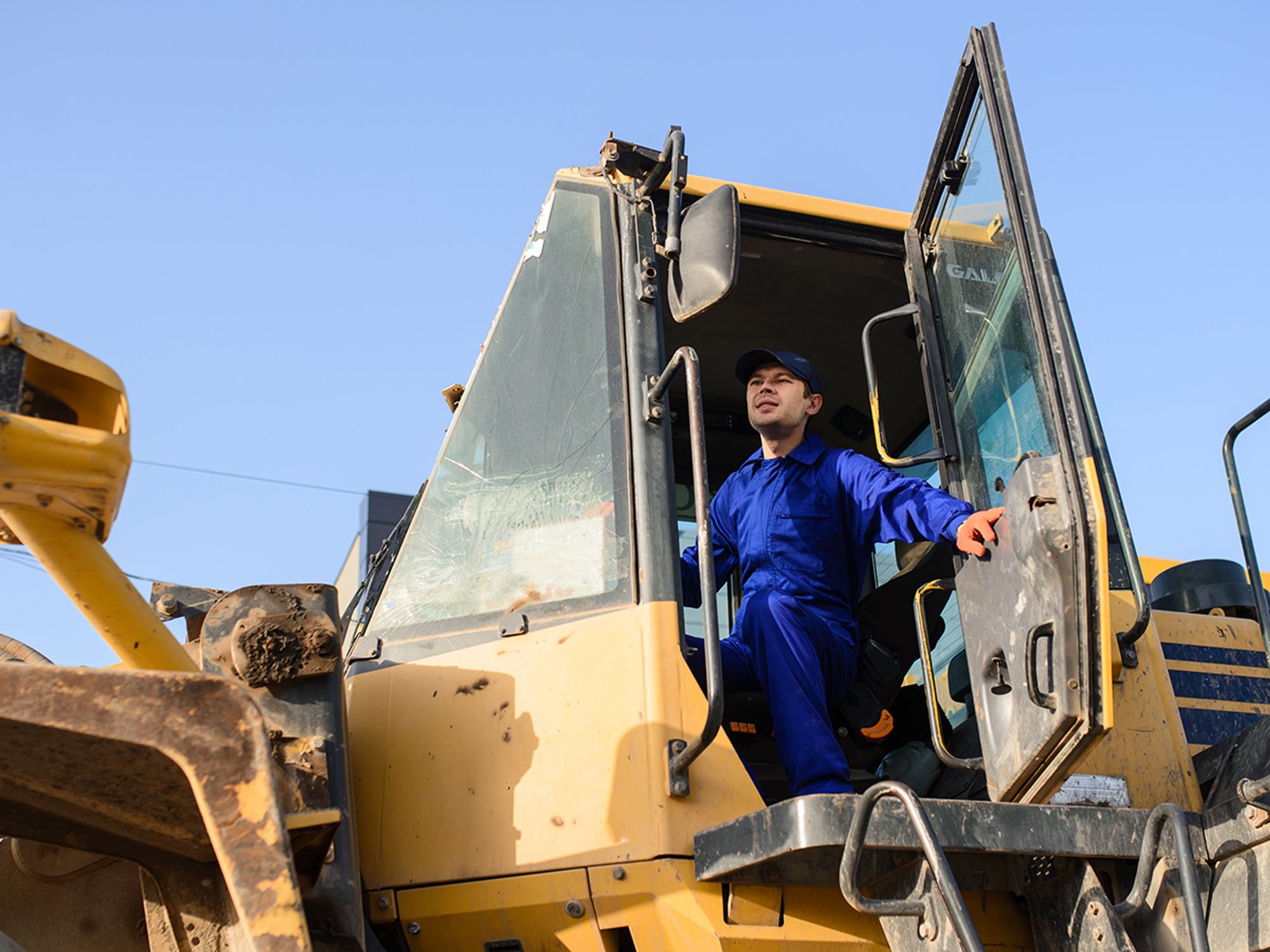Operating heavy equipment

For safe operation of heavy equipment your equipment operators must:
- Have safe equipment.
- Have the right personal stuff — proper training and an attitude toward safety.
- Be aware of the jobsite activities including the terrain, other equipment, fellow workers, overhead lines, and many more observations.
Safe equipment
OSHA usually concentrates on the safety features of equipment. Many other things can go wrong to make equipment unsafe. That is why a pre-operational walk around and a prestart up (in cab) inspection is important. Checklists, tailored to each piece of equipment, are important in this process.
A sample of the OSHA requirements for safe equipment is:
- Are service, emergency, and parking brakes working?
- Are headlights, taillights, and back-up lights operable?
- Does the audible warning device (horn) work?
Jobsite safety
Site activity checklists are also important for safe equipment operations. Accidents can be avoided if everyone has a clear understanding of the work to be done. Consideration must be given to all actual and potential dangers at the jobsite. The following are some of the jobsite hazards to be considered:
Overhead lines
Contact between large jobsite equipment and overhead lines is a major cause of fatal occupational injuries in the United States. All overhead lines must be considered to be energized unless and until the person owning the line, or the electrical utility authorities, indicate it is not an energized line, and it is visibly grounded and appropriately marked. The OSHA regulations have specific requirements for the safe use of equipment close to overhead lines.
Hand signals
When operating cranes the signal person and the crane operator must know the hand signals required by OSHA. In many situations hand signals can work for other equipment.
Barricades
Barricades must be set up to protect employees from being struck or crushed by rotating superstructures of cranes and excavators. Barricades should also be set up to warn other workers of other heavy equipment operations.
These are just a few examples of what you can do to improve site safety. Each site must be evaluated for hazards and safety measures implemented.
Employee training
The only requirement for employee training in regards to heavy equipment inspection is the requirement for competent persons to make frequent and regular inspection of jobsites, materials, and equipment by competent persons designated by the employer. It takes training to be a competent person.
Training tips
- Review a checklist for a piece of equipment;
- Show new employees the types of barricades, warning flags, and signs you use, or
- Go over your site safety checklist.
Where to go for more information
- 29 CFR Subpart O — Motor vehicles, mechanized equipment, and marine operations.
- 29 CFR 1926.20 — General safety and health provisions.
